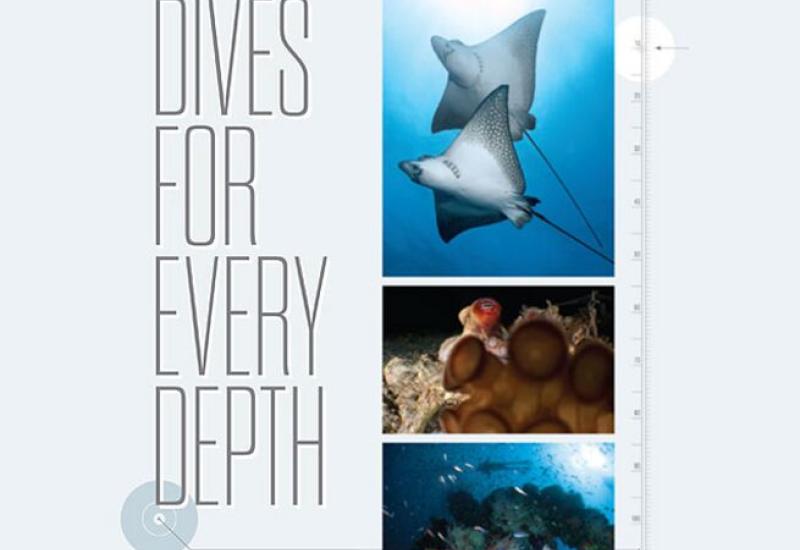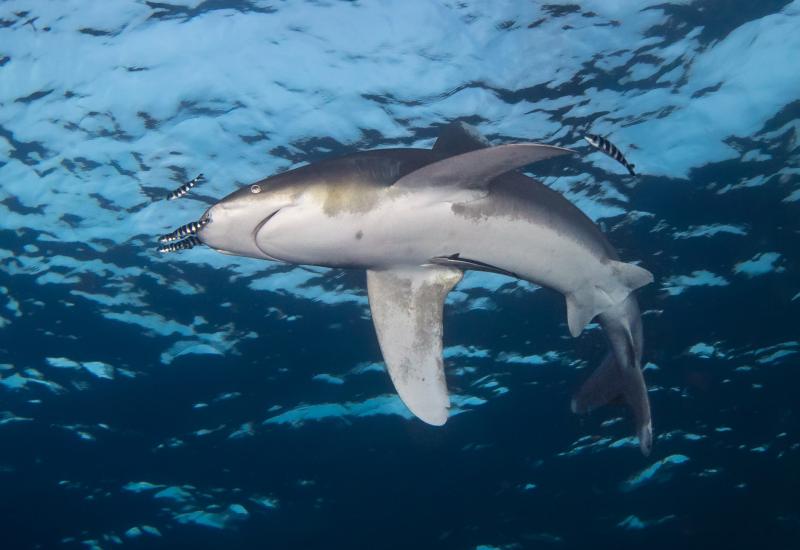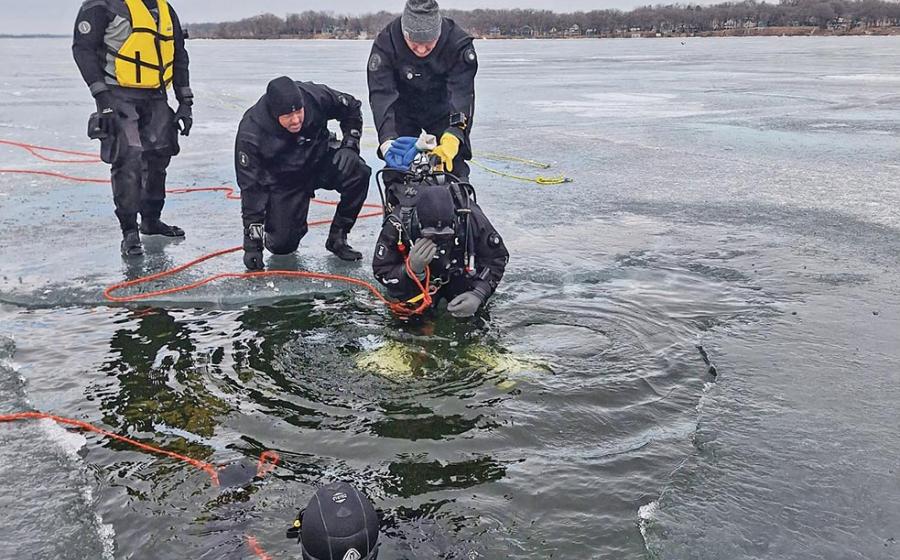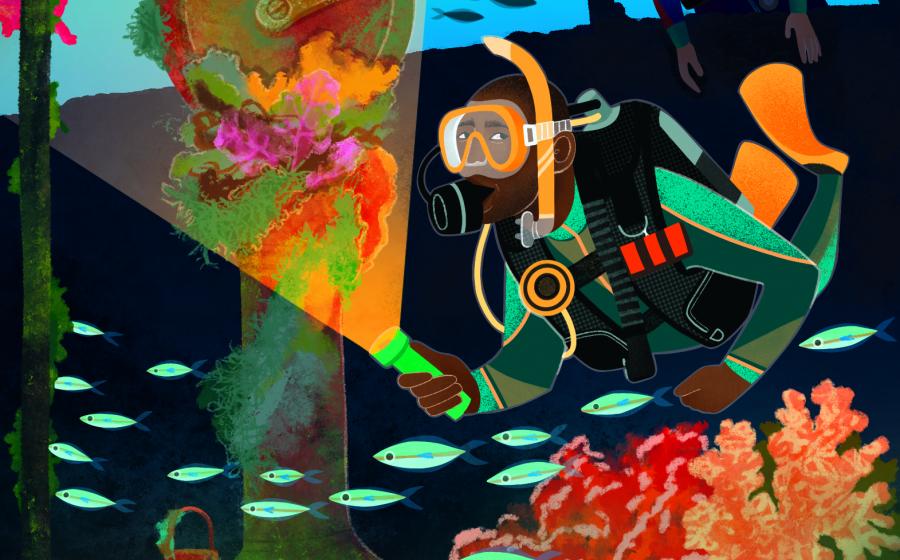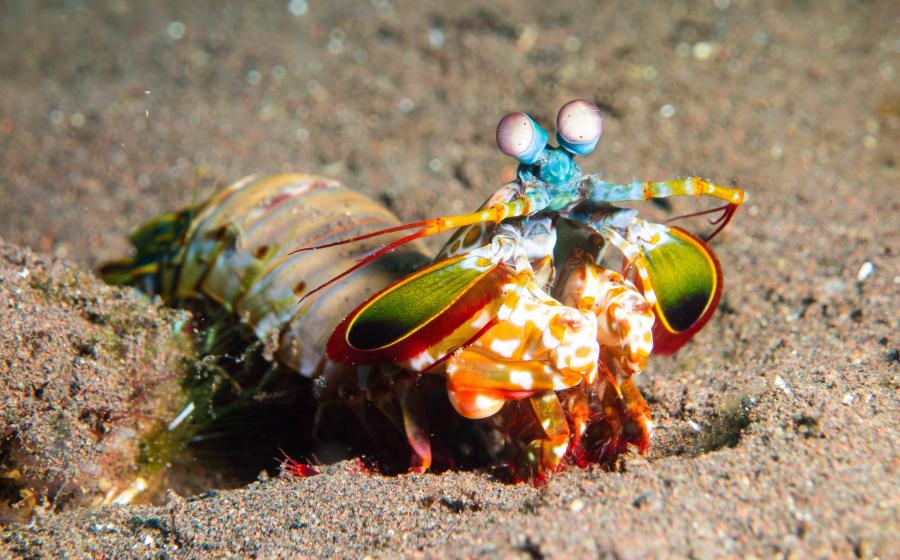Red Sea: Southern Style
On my first visit to the Brothers Islands in the southern Red Sea, we rode in a rickety, 30-foot wooden fishing boat powered by a two-banger diesel engine. The vessel looked like a seagoing Model T from Dust Bowl days, with mattresses, compressors and water jugs lashed to the deck for a journey into the unknown. The year was 1983, and fewer than 50 divers visited the Brothers annually. At the time, the islands were officially known as North Island and South Island. I dubbed them Big Brother and Little Brother, in honor of George Orwell's novel 1984. It didn't take a rocket scientist to devise those names, but I used them in some articles and a Red Sea guidebook, so they stuck. It was the most memorable dive trip of my life, filled with high adventure. But we paid the price in heat, labor and discomfort. We slept on a wooden pier and woke up shivering every morning, covered with dew. During the day, the only place to escape the oppressive heat was in the water. As the northern Red Sea resort areas of Sharm-El Sheikh and Hurghada become more popular and developed, adventurous divers are looking increasingly to the south. A fleet of boats now addresses that quest. For years, my diving tales from the southern Red Sea were a ticket to instant respect anywhere divers gathered. Now 50 divers a day visit the region's legendary islands, riding comfortable live-aboard boats guided by GPS, radar and electronic depth sounders instead of dead reckoning. I recalled my earlier experiences many times while relaxing in the spacious, air-conditioned lounge of the Red Sea Aggressor, our magic carpet for a 12-day journey to the southern frontier last summer. The Red Sea's southern region begins at Safaga and continues past Elphinstone Reef, Fury Shoal and Ras Benas to the Sudan border. In the middle of the southern Red Sea are three renowned island groups: The Brothers, Daedalus and Zabarghad. Travel to these islands was restricted for four years in the late 1990s by the Egyptian government. The closure was in reaction to two problems. First, the navy was tired of rescuing substandard boats after they broke down far from civilization. Local officials also recognized the need to protect the islands' pristine environment. Some reefs in the Hurghada area had sustained considerable anchor damage, so the Hurghada Environmental Protective and Conservation Association (HEPCA) was formed to install and service mooring buoys on all the dive sites, including offshore islands. When the sites were finally reopened in 1999, only 27 dive boats met the stringent requirements for permits. One of them was the Red Sea Aggressor. The difference between cruising on this plush live-aboard and my previous trips on lesser vessels was monumental. The Brothers Little Brother is a small, circular island with a reef that extends underwater to the north and south. The south end has an intense concentration of marine life, brilliantly colorful soft corals and swarms of anthias, the ubiquitous fairy basslets of the Red Sea. Huge sea fans are stacked atop one another on points exposed to strong currents. At twilight the wall was alive with frantic activity. Angular shafts of dying sunlight spilled over the top, backlighting the anthias. Fusiliers swimming along the wall suddenly darted as a tuna -- well over 150 pounds, big and fat and powerful -- appeared. A couple of sharks cruised off the reef in the distance. The Red Sea isn't noted for sharks, but we had some unexpected sightings right under the boat. On one occasion a large oceanic whitetip swam toward us very slowly and calmly, then veered 90 degrees and continued away, as sharks are prone to do. There was no sign of aggression, just idle curiosity. That was a relief, because oceanic whitetips are one of the few species reputed to be dangerous to humans. A lighthouse, built by the British in 1883 and manned by a crew of five Egyptians, towers over Big Brother. From its balcony, you can see the fringing reef dropping 6,000 feet into the deep blue. The highlights of Big Brother are two shipwrecks: a passenger ship, the Aida, and an unnamed freighter. Lying on the slope at precipitous angles, both have been there at least a half-century -- easily long enough to be transformed into gardens of colorful marine life. Having dived the Aida previously, we concentrated this time on the freighter. At 30 feet we spotted several large, spoked wagon wheels that looked as if they belonged to artillery pieces. Bushes of colorful soft corals surrounded the lifeboat davits. Rich invertebrate growth makes this ship an outstanding reef dive even for those who aren't interested in wrecks. Daedalus Perched on just a few square yards of sand, the lighthouse at Daedalus Island seems to rise directly from the sea. Two piers used by supply ships extend to the edge of the reef. My first dive here began inauspiciously, struggling along the wall against a strong current. Having used half my air in the first 15 minutes, I decided to stop fighting the current and drifted with it into the big blue. That's when things got interesting. First a pod of dolphins swam by, almost at the edge of our visibility, chirping and squeaking as if bidding us to follow. Then there were two manta rays, one being followed closely by four silvertip sharks, and finally a tuna almost as big as the silvertips. At the end, we were treated to another dolphin show. They cavorted around our inflatable, which was waiting for us on the surface, but displayed very little interest in the divers below. Zabarghad The southernmost island group is similar to The Brothers: a large island, Zabarghad, near a smaller one, Rocky Island. During the pharaonic era, Zabarghad was the site of a mining operation. The mineral was peridot, a green, semi-precious stone that can still be found there. If unsuspecting sailors approached too closely, their ship would be captured and the crew enslaved to work in the mines so no one could go back and tell others. A healthy reef at the southern end of Zabarghad features spectacular hard coral formations: table, dome and pillar shapes. We saw boxfish, slingjaw and birdnose wrasses, clownfish in fluorescent anemones, bullseye puffers, big groupers and rainbow runners along the edge of this fringing reef, which included a few tight swim-throughs leading to a lagoon. On the southeast corner of Rocky Island is a sheer wall with overhangs, outcrops of soft corals and black coral trees as shallow as 20 feet. It was one of those awesome wall dives that make you feel tiny and insignificant. The usual clouds of anthias surrounded a sun-drenched coral arch. Curious silvertip sharks patrolled from 80 to 130 feet, continually coming

